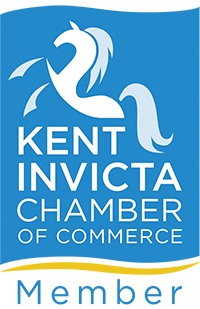Where does our local hard water come from?
Introduction
Water is the fundamental component of our eco-system.
No other resource is more important to man than water; it sustains all life and is crucial to our existence.
Roughly two-thirds of our planet is water, but less than 3% is available as fresh water.
- 80% of the earth’s surface is water.
- More than 97% of this water is in the oceans.
- 2% is locked in polar ice caps.
- Less than 1% is in freshwater lakes, streams and wells.
H2O
The true definition of “pure water” is H2O -- two (2) parts hydrogen to one (1) part oxygen.
However, “pure water” is expensive and very hard to find, and so water containing some degree of impurity is frequently termed “pure”.
Different individuals in various fields will use the term “pure water” when defining water that matches their needs --
- A bacteriologist defines “pure water” to contain no living bacteria.
- A chemist defines “pure water” to contain no minerals, gasses or organic impurities.
- A public water supply defines “pure water” to meet the United States Environmental Protection Agency (EPA) standards in terms of its suitability for drinking (or potability).
HYDROLOGIC CYCLE
The hydrologic cycle is considered to be the earth’s natural method of cleansing water.
The earth, sun and atmosphere all work together imitating a distiller. It is the largest water purification system known to man.
In this cleaning process, surface water evaporates from streams, lakes, etc. and rises to the sky in the form of vapour. The vapour condenses into clouds. When the condensation in the clouds are heavy enough, it falls to earth as rain, and snow.
About 70% of the water will evaporate again. The remaining 30% will replenish surface water.
Throughout the hydrologic cycle (see the Hydrologic Cycle image above), water changes from pure to impure, and back to pure again.
Here is the above Hydrologic Cycle process summarised:
Evaporation - Surface water is heated by sunlight and evaporates into vapour that then moves up into the atmosphere. This is the purest naturally occurring water.
Transpiration / Condensation - When water vapour condenses in the atmosphere, it forms clouds. The clouds becomes increasingly “dirtier” by picking up impurities - usually in the form of dissolved gases. This atmospheric water is acidic and aggressive. “Acidic” water tends to dissolve virtually all minerals it comes in contact with.
Precipitation - The acidic water returns to earth as precipitation (rain, snow, sleet, etc.)
Infiltration - The water picks up sediment and dissolved minerals as it seeps through the soil. As the water filters through the ground, it becomes hard, brackish and contaminated to varying degrees.
Evaporation - The water eventually heats again and the cycle repeats.
Inconsistent Water Chemistry
Water is considered a “universal solvent”, and will dissolve a portion of anything it comes in contact with, such as –
- Metals
- Rocks
- Waste Matter
- Gases
- Dust
- Foreign Substances
The dissolved content in water is termed “Impurities or Contaminants”. There are wide dissimilarities in the content of water, from area to area, because of environmental conditions.
Population, manufacturing, agriculture, terrain, seasonal precipitation, land development, irrigation, pollution and municipal pretreatment are all directly related.
Southern Waters: Kent, Sussex and South East Water
The majority (70%) of our supply in the South East comes from groundwater, predominantly from the chalk aquifer which is widespread across the region, the cause of all the hard water we get in our homes. A further 23% comes from rivers and the remaining seven 7% from surface water reservoirs owned by Southern Water.

Hard water comes from chalk which was created millions of years ago by rising sea levels. Chalk comes from the remains of tiny organisms that today provide fossil collecting opportunities. At the end of Chalk times (65 million years ago), sea levels fell and South-East England was uplifted. This led to the widespread erosion of the chalk, clearly evident in the corner of the Isle of Thanet near Pegwell Bay.
Some parts of Kent and East Sussex have incredibly hard water with all the effects of hard water visible around our homes. Other parts of the region have softer water. The map to the right highlights where the hardest water can be found, and although in softer water areas scale is less likely, all the cosmetic staining from dissolved chalk still leaves damaging marks around our homes.
If you imagine the bed of chalk that our water goes through as ground coffee beans within a coffee percolator. The thicker that bed of coffee, the stronger and richer the cup. The same applies to chalk. More chalk = harder water!
Because chalk dissolves when water passes through it, literally into a colourless, see-through glass of water, it is only when it dries or is boiled that residue forms again, leaving unsightly staining and scaling - we call this cosmetic water staining!
The thicker the bed of chalk that the water passes through, the harder the water. This is why even in soft water areas we get the cosmetic staining of hard water as there is still some degree of chalk in the water supply.

So how safe is our water to drink?
Firstly, let's be clear, it is safe to drink your water. Your choice to filter it comes down to your personal choice and perception of taste
The calcium in hard water is good for us, right? Our bodies need calcium to make our bones strong, and chalk indeed gives us this important source of calcium. However, there is more to it than meets the eye…

There are two forms of calcium – Dairy calcium and Rock calcium. Our bodies can fully absorb the calcium found in dairy products, however, we have less success absorbing rock calcium.
As a result, any excess rock calcium we absorb that doesn't get flushed down the toilet when we go to the loo can be left behind in our kidneys, and there are some suggestions that this can contribute to painful kidney stones. For more information on this subject: What is the position of kidney stones and hard or softened water?
Rock Calcium. Is that chalk?

Yes, quite like the chalk we use to write on blackboards.
It's perfectly harmless though. If you run a glass of water straight from your tap, it's almost impossible to see as it has dissolved in the water supply.
There is chalk in our water supply?
You might think we are kidding, and you'd be forgiven for thinking that! But the short answer is yes. And you'd be astonished to see how much there is. If you'd like to see for yourself exactly how much chalk is in your water, we'll be happy to come and do a simple test to show you.
Here is a sample of water I took on March 13th, 2018 in Headcorn, near Ashford. The central glass vial is set inside a glass of normal tap water, to show the difference between what we can see, and what we can't.

"So, if it is as safe as they say, we can just drink tap water, right?"
YES!
OK, so if we can drink it, why do so many people filter it?
The answer to this comes simply down to our individual preferences for taste.
If all you have ever drunk is incoming hard water straight off the mains, then the pure water is masked by chlorine and dissolved chalk. But it is in fairness perfectly safe to drink. A lot of people, however, don't like the flavour of mains water, and some people just don't trust it either.
But where does this distrust stem from?
It doesn't help when from time to time we are instructed by the water boards to boil our water due to unsafe levels of bacteria detected. That gives a lot of people cause for concern. However, the real trust is closer to home, and the answer can be seen in our kettles and glasses of water.
Hard water in practice



How do we use our water?
In the South East, regional statistics state that every person uses approximately 156 litres of water a day, and this figure has been growing by approximately 1% a year with the advance of larger showerheads and pumped water systems used in modern British homes.
Of all this water, only 4% is used for drinking water and food preparation purposes – that's just 6 litres a day!
With so little water used for drinking and food preparation purposes, mains water is treated at water treatment plants to be safe enough to drink, but that is it – no further treatment happens to it once it leaves the water treatment works, and so by the time it reaches you, it will be very different as it will pick up contaminants, sediment, and minerals along the way.
So with 160 litres of water per person being consumed every day, where does it all go if just 4% is used for drinking water?
-
 We each use on average 156 litres of water a day.
We each use on average 156 litres of water a day. -
 29 litres is flushed down the toilet.
29 litres is flushed down the toilet. -
 9 litres is used to wash dishes and around the kitchen.
9 litres is used to wash dishes and around the kitchen. -
 43 litres is used for personal hygiene.
43 litres is used for personal hygiene. -
 23 litres is used to wash our clothes.
23 litres is used to wash our clothes. -
 18 litres is used outside.
18 litres is used outside. -
 28 litres is used for miscellaneous internal use including washing the pets, cleaning, and leaks.
28 litres is used for miscellaneous internal use including washing the pets, cleaning, and leaks. -
 Just 6 litres is used for drinking tea, coffee, glasses of water or squash.
Just 6 litres is used for drinking tea, coffee, glasses of water or squash.
The Water Treatment Process
So how is our water treated?
The water in your home travels a long way.
Let's look at that journey:
Step 1 – Water is collected in reservoirs and from aquifers …

Step 2 – and pumped to water treatment works…
Step 3 – where the water treatment and the cleansing process begin.
Step 4 – As the water is filtered, solids are removed…

Step 5 – Eventually chlorine is added to purify the water and kill off any bugs …

Step 6 – after which the water quality is tested and passed as "fit for consumption".
Step 7 – From there it goes to storage reservoirs…
Step 8 – and a final water pumping station…
Step 9 – before being pumped to your neighbourhood, and home ready for your use. Along the way can pick up sediment, and taste & odours you may prefer to filter out.

Step 10 – Once in your home, it goes to your own cold water tank or hot water cylinder…
Step 11 – where your water is stored, ready for your use.
Step 12 – Eventually we open our taps, and bathe or drink our water. The chlorine that was added around step 9 continues to be present in our water supply.
The important factors that determine our enjoyment of drinking water, i.e. the taste of it, are left to the individual homeowner to manage.
So it makes sense that the water we drink should be better quality than the water we flush down the drain or use to water the garden.










